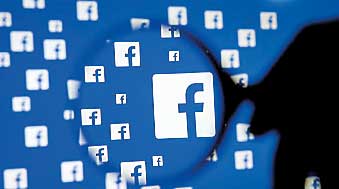Saturday Apr 19, 2025
Saturday Apr 19, 2025
Friday, 26 February 2016 00:00 - - {{hitsCtrl.values.hits}}
Reuters: Facebook users around the globe can now do more than “like” a post. They can love it, laugh at it or feel angered by it.
The social network rolled out “Reactions” – an extension of the “Like” button – worldwide on Wednesday, to allow users to express sadness, wow, anger, love and laughter.
In a video accompanying a blog post, the five new buttons appear as animated emoticons that pop up when the “Like” button is held down on mobile devices. The buttons appear on desktops when users hover over the “Like” button.
Facebook launched a pilot of “Reactions” – which allowed users to select from seven emotions including “Angry”, “Sad”, “Wow” and “Like” – in Ireland and Spain in October.
The “Yay” emoticon, which was present in the pilot launch (on.fb.me/1LBnXIG), was not seen in Wednesday’s video (bit.ly/24oZ6yi).
“People wanted to express empathy and make it comfortable to share a wider range of emotions,” Zuckerberg wrote on his Facebook page.
Facebook Chief Executive Mark Zuckerberg said in September the company was thinking of adding a “dislike” button, which spearheaded a debate over whether it would increase cyber bullying and negativity on the site. In October, the company said it would expand its signature “Like” button with various reactions.
The slow test and rollout of the expanded button – which Zuckerberg has said is the company’s biggest design change to date – is a marked change from Zuckerberg’s famous mantra, “move fast and break things.”
The company said it will also use “Reactions” to track user behavior and for ad delivery.
“We will initially use any Reaction similar to a Like to infer that you want to see more of that type of content,” Facebook said in a separate blog post. (bit.ly/1TFzfOC)
The feature received mixed reviews from users on social networking sites.
Many complained that they could not see the new emoticons, while some were unhappy that Facebook did not launch a “dislike” button.
Marina Cupo wrote on Facebook: “I would rather have had a DISLIKE button and then attach an emotion instead if I want!”
Users have often responded negatively to similar changes on other sites. Twitter, for example, replaced its star-shaped “favorite” icon with a heart-shaped icon called “like” in November. Users initially scorned the change, but Twitter later said it increased activity on the site.